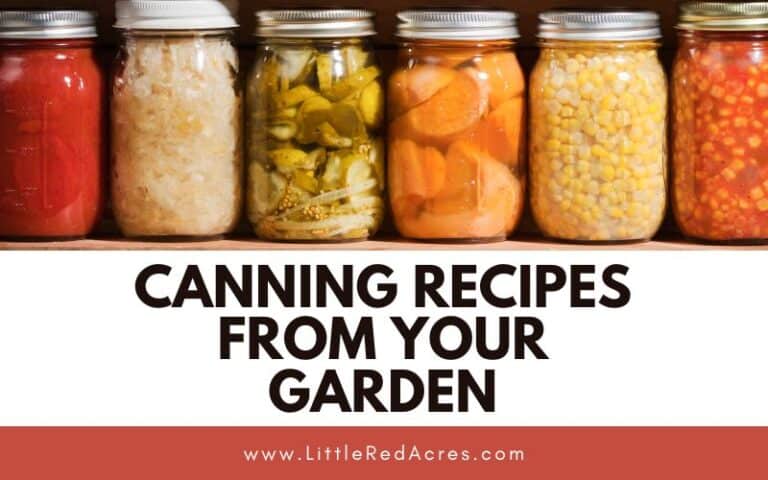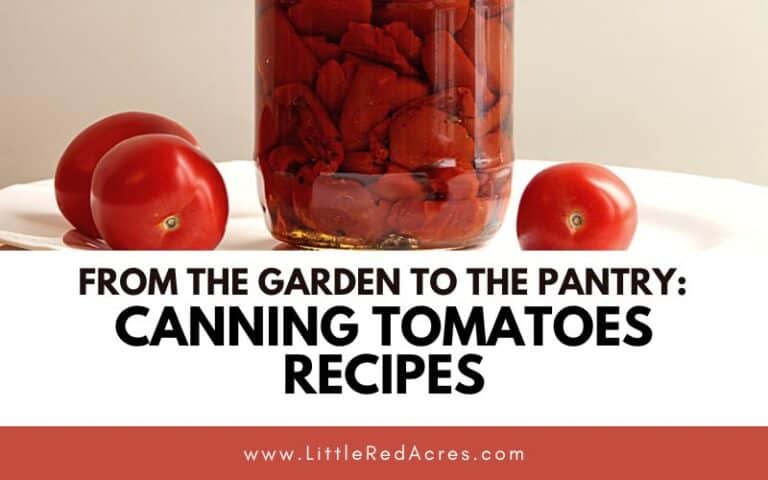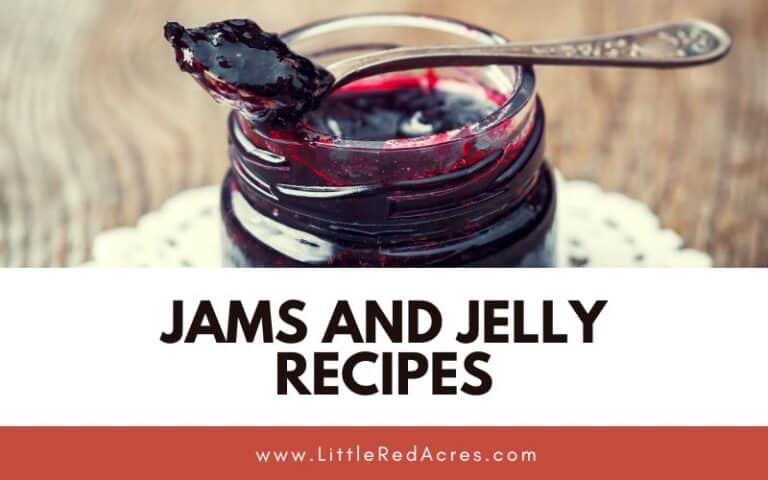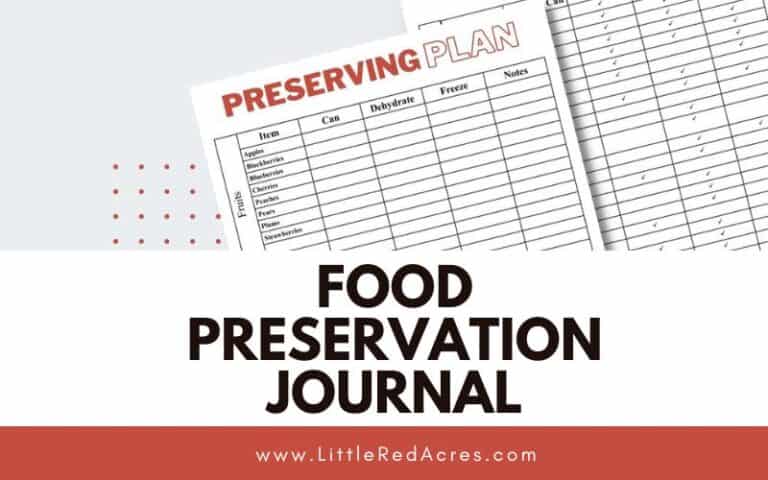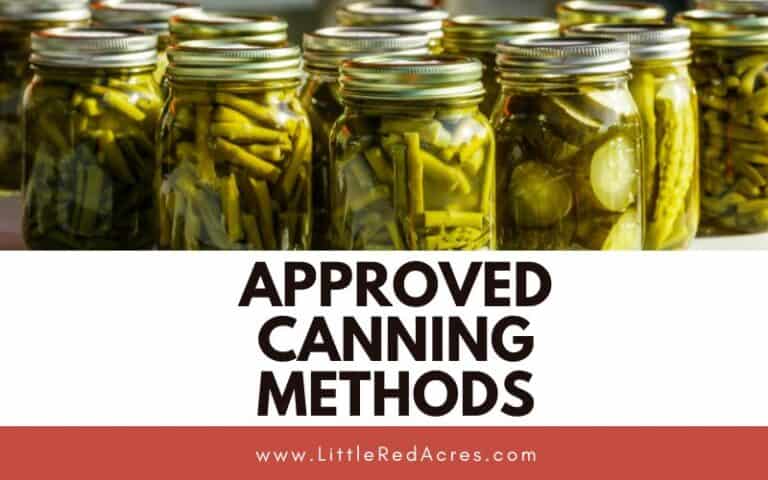7 Tips for Successful Canning and Freezing
Inside: If you love the taste of fresh fruits and vegetables but hate the high prices at the store, you may want start to canning and freezing.
If you love the taste of fresh fruits and vegetables but hate the high prices at the store, or you want to cut out the added ingredients that really shouldn't be in your food, you may want to learn how to can and freeze your own. Canning and freezing fruits and vegetables is a great way to enjoy them year-round.

7 Tips for Successful Canning and Freezing
Canning and freezing are popular ways to preserve foods, especially summer's bounty. They're both ways to prevent waste and save money. But things can go wrong, and sometimes your efforts to can and freeze don't turn out too well.
Personally, I like to dehydrate things as much as possible because we always have the chance of a power outage here in the winter. Our outages can last minutes, hours, or days and I hate losing food in my freezers.
Get updates & freebies delivered to your inbox!
Choose Foods of the Season
For the best bet at success, preserve seasonal, local foods. They are fresher and therefore more nutritious.
Seasonal foods grown locally are also less likely to be sprayed with preservatives and other chemicals to protect them during long shipments.
This is where growing your own comes in handy. Then you know exactly what you are preserving and how it was grown. You're also able to grow as much as you want/need yourself if you have the space.
Or if you are unable to grow what you want or need, try buying at farm markets, or from local farmers. There is nothing better than supporting local
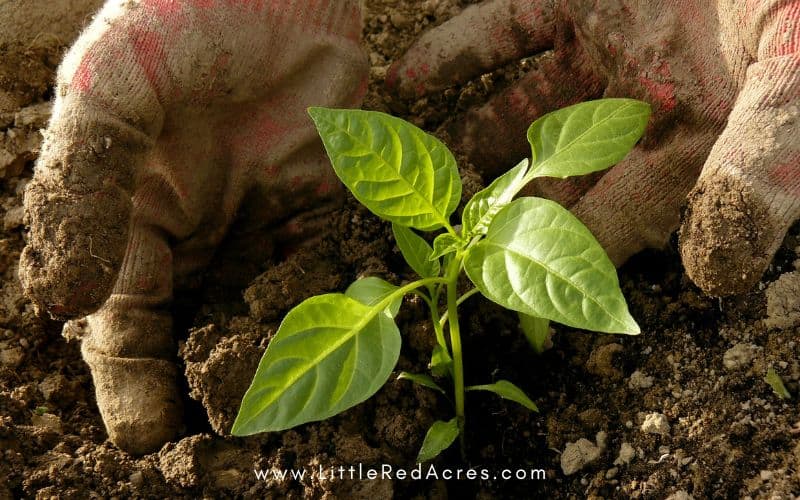
Blanching Foods
If you are freezing fresh food, blanching it before freezing it can considerably increase your success rates.
To blanch foods, dip them in boiling water for a few minutes, then remove them quickly and plunge them into ice water to stop the cooking process.
You can also blanch by steaming before the ice water bath. This process is supposed to help foods keep their color, flavor, and texture better than those that are frozen when raw.
Sterilize Everything
The importance of cleanliness in preserving foods – especially canning – cannot be overemphasized. It's vital that you follow your canning recipe closely and that you update it.
Some recipes may call for a hot water bath when pressure canning is really the only way to be sure the germs are killed. Make sure you use sterilized jars, jar tops, funnel, and tongs.
Always use new jar tops. You can clean and reuse jars and jar rings, but it is important to buy new tops.
Looking to extend the shelf life of your food? Look no further than the Food Preservation Journal! This handy guide includes tips and tricks for preserving your food, so you can enjoy it for weeks or even months to come.
Get All the Air Out
Getting the air out of foods you are freezing is essential. If you don't have a vacuum sealer you can draw the air out of zip-top bags with a straw. It is really very easy to do.
In canned goods, you can tap the bottom of the jar sharply on the kitchen counter to release air bubbles. The process of water bathing will do this for you. Make sure that when you put your rings on you do not over-tighten them preventing air from escaping. The pop you hear of the top sealing is the air escaping and the top being pulled in.
It can take up to 24 hours to hear the pop, for your jars to become sealed properly so leave those jars out and check them after 24 hours.

Sale Items
If there is a sale on produce at your local market or grocery store, canning and freezing are excellent ways to keep that wonderful money-saver from going to waste.
This is why I have so many peppers dehydrated in my cupboards. For one they were on sale for half off, but then they had a clearance 50% off stickers. Six large bell peppers for $1.50? Yes, please!
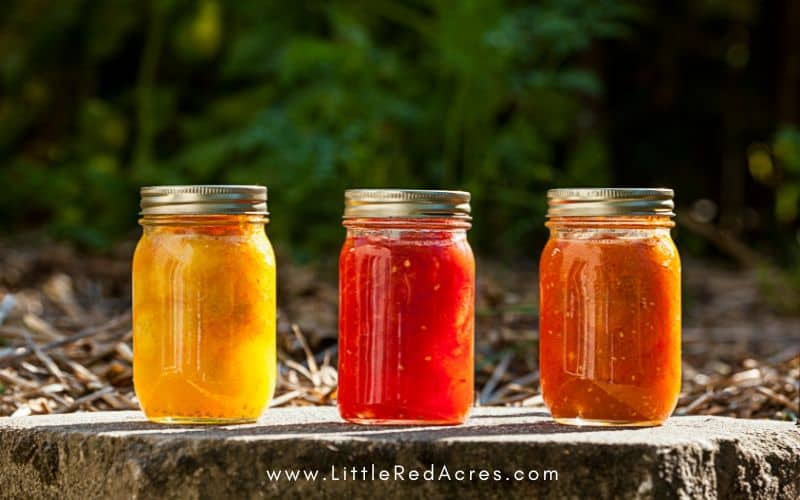
Preserve in Small Batches
I don't know about your garden, but mine seems to be harvestable in spurts, which makes small-batch canning easier than trying to harvest enough tomatoes at one time to make spaghetti sauces or salsa. Plus, I don't have a huge dehydrator so it helps me spread it out over time.
Deep Freeze For Better Quality
For freezing foods, the colder the temperature, the better. This means that you may need to invest in a chest freezer rather than using your refrigerator's freezer.
Chest freezers keep the temperature lower than the average fridge freezer, and the colder the temperature, the longer the food can be kept.
You can also freeze items to be used later in canning. It can help you save fruits and vegetables to larger batch canning. I currently have tomatoes, peppers, and blackberries in my freezer waiting for their canning day.
Frequently Asked Questions
Is it better to freeze vegetables or canning? It depends on the veggie and on how much freezer space you have available. But in terms of flavor and texture, freezing gives superior eating quality, while canning is more energy and space-efficient.

Want More?
Dehydrated Strawberries & What to Do with Them


